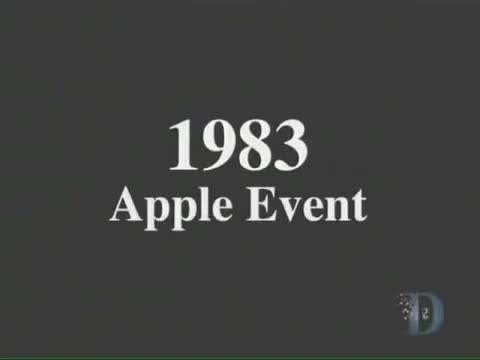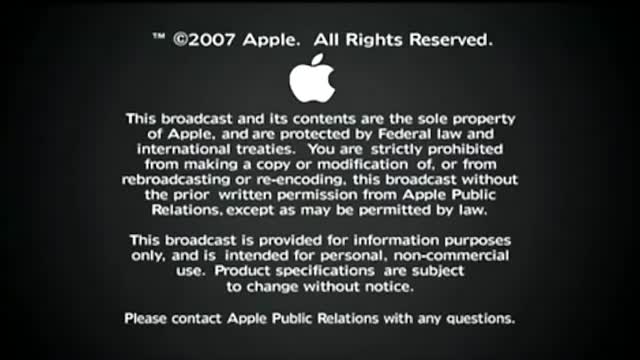Copy Link
Add to Bookmark
Report
HOMEBREW Digest #2007

This file received at Hops.Stanford.EDU 1996/04/10 PDT
HOMEBREW Digest #2007 Wed 10 April 1996
FORUM ON BEER, HOMEBREWING, AND RELATED ISSUES
Rob Gardner, Digest Janitor
Contents:
Washington DC/Williamsburg VA (Bob McCowan)
Watney's Red Barrel Clone Request (William D Gladden )
Small & Tiny competition delayed (Spencer W Thomas)
Canning procedures? (Steve Adams)
Salts In Mash (KennyEddy)
Labeling Dates (andrew costello)
Re: Water Analysis (Brian Cornelius)
OUCH!!! Stop already!!! ("Patrick G. Babcock")
Automated Sparging (blacksab)
Do not ferment! (KrisPerez)
dry hopping ("Sharon A. Ritter")
new brewer/old topic? (CHRISTOPHER DIIORIO )
Culturing Yeast (Steven Gray)
Hop and OG formulas, extraction, a big thanks, and phophecy (HuskerRed)
Sake/sodium hydroxide for bottles (Nir Navot)
******************************************************************
* POLICY NOTE: Due to the incredible volume of bouncing mail,
* I am going to have to start removing addresses from the list
* that cause ongoing problems. In particular, if your mailbox
* is full or your account over quota, and this results in bounced
* mail, your address will be removed from the list after a few days.
*
* If you use a 'vacation' program, please be sure that it only
* sends a automated reply to homebrew-request *once*. If I get
* more than one, then I'll delete your address from the list.
******************************************************************
#################################################################
#
# YET ANOTHER NEW FEDERAL REGULATION: if you are UNSUBSCRIBING from the
# digest, please make sure you send your request to the same service
# provider that you sent your subscription request!!! I am now receiving
# many unsubscribe requests that do not match any address on my mailing
# list, and effective immediately I will be silently deleting such
# requests.
#
#################################################################
NOTE NEW HOMEBREW ADDRESS hpfcmgw!
Send articles for __publication_only__ to homebrew@hpfcmgw.fc.hp.com
(Articles are published in the order they are received.)
Send UNSUBSCRIBE and all other requests, ie, address change, etc.,
to homebrew-request@hpfcmgw.fc.hp.com, BUT PLEASE NOTE that if
you subscribed via the BITNET listserver (BEER-L@UA1VM.UA.EDU),
then you MUST unsubscribe the same way!
If your account is being deleted, please be courteous and unsubscribe first.
Please don't send me requests for back issues - you will be silently ignored.
For "Cat's Meow" information, send mail to lutzen@alpha.rollanet.org
ARCHIVES:
An archive of previous issues of this digest, as well as other beer
related information can be accessed via anonymous ftp at
ftp.stanford.edu. Use ftp to log in as anonymous and give your full
e-mail address as the password, look under the directory
/pub/clubs/homebrew/beer directory. AFS users can find it under
/afs/ir.stanford.edu/ftp/pub/clubs/homebrew/beer. If you do not have
ftp capability you may access the files via e-mail using the ftpmail
service at gatekeeper.dec.com. For information about this service,
send an e-mail message to ftpmail@gatekeeper.dec.com with the word
"help" (without the quotes) in the body of the message.
----------------------------------------------------------------------
Date: Tue, 9 Apr 1996 07:50:59 -0400
From: Bob McCowan <bob.mccowan@cfrp.varian.com>
Subject: Washington DC/Williamsburg VA
We're heading to Williamsburg and DC in a couple of weeks and I'd like
advice on good micros and brewpubs to try.
Thanks
Bob
bob.mccowan@cfrp.varian.com
------------------------------
Date: Tue, 09 Apr 1996 07:06:35 -0500
From: William D Gladden <W_GLADDEN@Mail.Co.Chester.PA.US>
Subject: Watney's Red Barrel Clone Request
>From : Bill Gladden
Re: Watney's Red Barrel Recipe Request
I've checked every recipe database on the net I know of. No
luck. Hopefully some of you all can help. A partial mash recipe
would be ideal. All grain brewers who have not scrolled down
could provide useful info. such as yeast strain, hop variety(s) -
rates - and schedules. Any assistance is appreciated. I'll post
a summary if lots of people express interest, otherwise i'll
answer inquires privately. Thanks.
Bill Gladden
"W_GLADDEN@Mail.Co.Chester.PA.US"
------------------------------
Date: Tue, 09 Apr 1996 09:59:00 -0400
From: Spencer W Thomas <spencer@engin.umich.edu>
Subject: Small & Tiny competition delayed
Due to circumstances beyond my control, I need to postpone the judging
of the Small & Tiny competition until the weekend of April 27. So,
I'm also extending the entry deadline by the same amount. The
deadline is now Friday, April 26.
E-mail me for info, or see
http://realbeer.com/spencer/AABG/Small_and_Tiny.html
or
http://nemesis.engin.umich.edu:8080/AABG/Small_and_Tiny.html
=Spencer Thomas in Ann Arbor, MI (spencer@umich.edu)
------------------------------
Date: Tue, 09 Apr 96 10:10:31 est
From: paa3765@dpsc.dla.mil (Steve Adams)
Subject: Canning procedures?
I'm interested in canning wort for the usual reasons. Does anyone have some
handy instructions and tips on how to do this?
SA
------------------------------
Date: Tue, 9 Apr 1996 10:34:28 -0400
From: KennyEddy@aol.com
Subject: Salts In Mash
Rob Lauriston asks about adding salts to the mash. Yup, you're right; you'll
get a higher concentration by adding 5 gallons worth of salt to a mash
containing 3-1/2 gallons of water. For the mash itself, Ca and "carbonates"
are your primary concern. Too much Ca could conceivably overacidify the
mash; too much "carbonate" would underacidify. Other ions should dilute out
OK in the final sparge and do their thing in the boil & the final product.
I add my salts in the 5-gallon quantities to 5 gallons of strike water. Any
remaining water is discarded and another 5 gallons prepared for sparging. I
certainly could just replenish whatever's left over to get back to 5 gallons,
and reduce the salts accordingly, but I usually have them weighed out ahead
of time and it's easier. I could also mix them into two separate five-gallon
containers; then all my water is the right concentration. Assuming my
formulation matches some city's water profile, this is equivalent to using
that city's water in my brewing, and any furhter treatment (such as sparge
acidification) is equivalent to what a brewer in that city would be doing.
So adding baking soda to boost bicarbonate, then adding acid to neutralize
it may seem counterproductive, but it gives the same result as using the
"natural" water.
Chalk is a different story since it's very insoluble in plain water. Any
more than 1/4 gram per 5 gallons should be added *in the correct proportion*
directly to the mash and well-stirred. The acidity of the mash will help
incorporate it. For example, if you've figured you need 1 gram chalk in 5
gallons, and strike with 3-1/2 gallons, use (3.5/5) * 1 gram = 0.7 grams
right in the mash, and stir it in well.
For your treatment and your water, Rob, I come up with 128 ppm Ca and 312 ppm
SO4, great for a Burton ale but bound to be harsh for gentler styles due to
the high sulphate. You do need a calcium boost to ensure good mashing,
perhaps CaCl would be a better choice (available from Hop Tech, (800)
DRY-HOPS, std disclaimer). Your water analysis did not include hardness, Na,
or Cl -- are they "zero"? If so, adding 4 g baking soda, 4 g CaCl, and 5 g
gypsum to your water yields Ca=42, SO4=59, Na=20, Cl=35, bicarb = 75,
hardness=102, and alkalinity=66 ppm. This should be a decent
"general-purpose" brewing water suitable for a wide range of styles.
BTW if the "unlisted ions" really ARE zero in your starting water, you'll be
missing Mg which is an important yeast nutrient. There apparently is some in
the grain and whether additonal Mg is necessary I really don't know. Maybe
some old dry yeast might be of use <|:-) , or maybe a pinch of "yeast
nutrient" in the boil. Perhaps one of our yeast experts can comment on this.
Epsom salt contains Mg but adds so much sulphate for so little Mg it must be
used prudently.
Ken Schwartz
KennyEddy@aol.com
------------------------------
Date: Tue, 9 Apr 1996 11:26:06 -0400
From: acostell@moose.uvm.edu (andrew costello)
Subject: Labeling Dates
A quick question for the collective - I recently bought a six pack
of Otter Creek Brewings ( Middlebury, Vermont ) new spring beer, " Mud Bock
". The beer was great, but my question involves the date on th back of the
label. It said that it was bottled on March 21st. Obviously this beer was
fresh, but how long is to long for a beer to sit at the store ?
loper
------------------------------
Date: Tue, 9 Apr 1996 08:56:51 -0700
From: Brian Cornelius <bcorneli@wsu.edu>
Subject: Re: Water Analysis
A. J. deLange wrote:
>Pat bemoans the difficulty in getting a reasonable water analysis reporting
that his "Sanitary District" wants $10/ion for a determination. If you are
on a well, I can understand this. If the "Sanitary District" supplies you
with water then you are being given the runaround. A supplier MUST do
analyses to insure that his water meets mandated federal, state, and
possibly local, standards in other words, they have the data and should
supply it. If the supply entity is public or quasi public they are probably
required by law to furnish the data.
I'm a commissioner (un-paid I might add) of a small Sewer and Water District
in Eastern Washington. Under the Revised Code of Washington (RCW), we're
required to provide our customers, upon request, with information about the
water system. I'm sure this is true of other states as well. Having said
that, the only request for this info in the last 4 years has come from me.
Be aware that the tests may not be that current. We're required to have a
volatile organic solids test every 3 years. The inorganic test, which is
what brewers would want, is not on a schedule according to the local DOE
representative. Our last test was in December 1991. Ions that we may want
to see in a those reports for brewing purposes, may not be a required part
of the tests. For example, Sulfates and Magnesium were not tested. The
only thing we test for regularly is bacteria/coliform and an "acceptable"
chlorine level at $12/month. From what I've seen, $10/ion (test) is
standard. The 1991 report checked 20 things and the state charged us $195.
Brian
bcorneli@wsu.edu
Brian Cornelius bcorneli@wsu.edu
Advancement Services
Washington State University
Pullman, WA 99164-4102
(509) 335-1686
O-
------------------------------
Date: Tue, 9 Apr 1996 11:57:14 -0400
From: "Patrick G. Babcock" <pbabcock@ford.com>
Subject: OUCH!!! Stop already!!!
Greetings, Beerlings! Lay off the lager, already!
I appreciate the primer in constitutional law I'm receiving via the HBD (thank
you, thank you!); however, please reread the post and note the vein in which it
was written! Mein Gott! Must we all take ourselves so seriously?!?
Sheesh! OK: no more humorous posts! (Tough room...)
See ya!
-Pat Babcock
pbabcock@oeonline.com
(C) Copyright 1996 Must Rassell
------------------------------
Date: Tue, 09 Apr 1996 11:02:04 -0500
From: blacksab@siu.edu
Subject: Automated Sparging
I've been asking the same question for a while now, and I think I found the
answer in J.S. Hough's THE BIOTECHNOLOGY OF MALTING AND BREWING. What do you
think of this, and has anyone actually tried it? Here's the relevant passage
from p.61:
In order to keep the mash floating, the extraction of worts must not impose
a strong hydrostatic suction. The mash tun's wort-withdrawl pipes are
therefore provided with an inverted U tube and syphon breaker...
The picture of the mash tun on p.58 suggests that the top of the U
represents the top of the grain-bed and is marked "device for adjusting
hydrostatic head". Therefore, what seems to be happening is this tube takes
the liquid from the bottom of the mash-tun (the highest gravity), but not
until the head has exceeded the top of the grain-bed. As such, the flow of
sparge water dictates the outflow of wort from the mash tun since there is
no longer any siphon.
QUESTION #1: Is this what I am seeing (or something like it) in the picture
on p.67 of Eric Warner's GERMAN WHEAT BEER?
QUESTION #2: Would this then mean that I would NOT drain the entire mash tun
after my hot liquor tank ran empty, OR, when it ran empty, would I simply
engage the siphon and drain the remaining liquid? IOW, would there be enough
dilution of the sweet wort to simply shut the sparge down as soon as the
gravity reaches ~1005 and just toss the remaining liquid with the spent grains?
If no one has tried this, I'm going to give it a shot since my mash tun has
a male flare fitting after the ball valve and changing tubes is a snap.
Whaddya all think????
Harlan
======================================================================
Harlan Bauer ...malt does more than Milton can
<blacksab@siu.edu> To justify God's ways to man.
Carbondale, IL
--A.E. Houseman
======================================================================
------------------------------
Date: Tue, 9 Apr 1996 16:48:24 -0400
From: KrisPerez@aol.com
Subject: Do not ferment!
From: "Olson, Greger J - CI/911-2" <gjolson@bpa.gov>
>I recently looked through a combination recipe/advice/advertisements book
>given to my grandmother after she got married in Tacoma back in 1928. There
>were no less than three ads for local hopped malt extract, and this in what
>was not a particularly large city. One of these, by Berg & Son, touted
>their "Hop Flavored Malt Syrup" for "Hop Scotch Candy". My question is
>this: has there ever been any common use for malt extract other than
>brewing?
>I suspect each can came with: Warning! - Do not add yeast and let ferment
>or an illegal alcoholic beverage might result! :-)
I have a very old can of Blue Ribbon, hop flavored malt extract. It would be
hard
to guess at a date, but if forced I would say somewhere in the late 50's to
early 60's.
Of course I could be totally wrong.
Anyway, on the back of the can it says:
"For the preparation of distinctive foods, of an agreeably superior flavor,
and at the same time of very high nutritive value, BLUE RIBBON MALT
Extract, Hop Flavored, is a real boon to the housewife. Made from
selected materials, purity is assured to the purchaser of BLUE RIBBON,
while skill in the processing gives the added touch of perfection."
It just cracks me up that this *HOP FLAVORED* malt extract is for
"the preparation of distinctive foods", and not for making beer.
Check the ingredients on a package of Famous Amos cookies, one of
them is malt extract. We have a local pizza place that uses malt extract
in his pizza dough. And don't forget malted milkshakes and malted milkballs.
Kristine
KrisPerez@aol.com
------------------------------
Date: 09 Apr 96 18:49:46 EDT
From: "Sharon A. Ritter" <102446.3717@compuserve.com>
Subject: dry hopping
Mike asks:
>What is the technique for dry hopping in a Corny keg?<
I put my whole hops into a reusable and sanitizable (huh?) nylon hop
bag. It holds about 1 1/2 ounces and is available from nearly all the
larger mail order houses. I formerly added about 10 sanitized marbles to
sink the hops in the keg, but I've recently purchased a piece of teflon
with a hole drilled in the top that does the same thing. Now I sanitize
a hunk of teflon, instead of ten rambunctious marbles, and attach the
hop bag string to the teflon sinker. I keep my hops in the keg for 1-2
weeks depending on the variety. In my experience, 1 week to 10 days is
plenty for Cascades but Goldings needs 2 weeks for full effect. I keep
the keg at 50 degrees or lower during the dry hopping.
Dan Ritter in Grangeville, Idaho
102446.3717@compuserve.com
------------------------------
Date: Tue, 9 Apr 1996 20:53:16 -0400 (EDT)
From: CHRISTOPHER DIIORIO <pher@acc.msmc.edu>
Subject: new brewer/old topic?
Greetings,
I've been brewing for only 4 short months now using a pre made starter kit
my father-in-law (and new friend) bought me for Christmas. I've made a
few good batches using malt extracts and specialty grains, but have not
gotten into all grain brewing (I'm waiting for him to start all grain and
(maybe) buy me the equipment for that too!)
I do a single fermentation in a glass fermenter and have made, what I
consider, some pretty good brews. Prior to getting the HBD, I made a
porter (from a kit I bought) that smelled and tasted sort of
skunky. It fermented for 14 days and sat in bottles for 2 months before I
tasted it. I needed bottles so I (ugh!) dumped it, not saving a one.
Now I have a similar problem, although this time it is a lager.
I made this batch two weeks ago and, when I went to bottle it, I noticed
the same skunky odor (and taste) the porter had. At the suggestion of my
wife (the closest expert available), I racked the beer into my spare
fermenter, leaving a lot of sediment on the bottom of the original.
Now, I have come to ask the collective mass of those in the know your
opinions on the cause of this odor. I don't want to toss the batch (now
that I've read HBD), but don't know what to do.
Allow me to explain what I have done.
I used 1lb crystal malt (steeped like a tea bag until just before boil) then
added a 3lb can of Gordon's Blue Mtn Lager and 2lbs of M&F plain light DME.
I boiled this for 65 minutes, adding 1 oz of Cascade at 10, 20, and 50
min. I added 1 tsp Irish Moss for the last 10 min.
Since my homebrew store was all out of liquid yeast (less than 8 months
old) I used the dry yeast that came with the Blue Mtn Lager (I can feel
you all cringe) and began what I hoped would be fermentation at 52 deg.
When no activity occured after 5 days, I asked my (sold out of good liquid
yeast) homebrew supplier what he recommended. He told me to use the old
Wyeast he had, but I didn't trust it. He then suggested using 2-6gram
packets of Amsterdam Lager yeast. He said to allow it to Hydrate and to
add it to the Lager at about 74 deg, lowering the temperature to about 54
deg after fermentation begins. This procedure worked and I saw at least 3
days of activity.
Now, however, I have this odor and taste and, hence, my questions:
What could have caused this?
Could it just be the yeast?
Will it go away with time (and get better)?
Was it the temperature changes (from 52 to 74 to 54)?
How about all the hops?
(I've used a lot of hops before, but never used Cascade)
Have I harmed the beer by racking it to the other fermenter?
What about oxidation?
Should I just open another homebrew and relax?
Any tips on making this work/smell better/etc. are GREATLY appreciated. I
would also appreciate any advice/strategies/whatever on laggering in
general. Private e-mail is ok. Thanks in advance!
Chris DiIorio
"Taking on the world, one beer at a time."
pher@acc.msmc.edu
------------------------------
Date: Tue, 9 Apr 1996 18:02:24 -0700 (PDT)
From: Steven Gray <sgray@calweb.com>
Subject: Culturing Yeast
Hi All,
I am currently trying to culture my own yeast for the first time from
a couple of CHIMAY bottles and have a question regarding my sterile wort.
After it was bottled and cooled, the wort is very clear but I have the
layer of trub (cold break) on the bottom of each bottle. When I ready to
get cultured (good luck), should I add my dregs to the wort with the cold
break, or should I rack it off some how. None of my books (by Papazian or
Miller) seem to address this specifically.
Thanks in advance for any help!!!!
Steve Gray
Shingle Springs, Ca !!! BEER DOESN'T SUCK !!!
sgray@calweb.com
------------------------------
Date: Wed, 10 Apr 1996 00:28:49 -0400
From: HuskerRed@aol.com
Subject: Hop and OG formulas, extraction, a big thanks, and phophecy
Hello friends,
I've made the jump to all-grains and am trying to formulate some recipes.
I not sure how to do the hop calculations. Randy Mosher says in The
Brewer's Companion "ounces times alpha acid percentage, divided by the
total gallons" is Homebrew Bitterness Units and then "to calculate IBUs,
you multiply Homebrew Bitterness Units by a factor that depends on kettle
utilization". Well, it just doesn't work out right. I found in Zymurgy's
Great-Grains edition, a correction factor of .749. If I use Mosher's
graph for (kettle) utilization rates and this correction factor, it seems
to works out better. Can someone help with a formula for utilization and
hops bitterness?
Since I'm in the calculation mode, how do I figure my batch's estimated
OG? For example, I'm trying to draw up a Imperial Stout recipe, the style
is suppose to be between 75 and 95 OG and I'm shooting for about 85. Do I
multiply 85 by 5 gals/6.5 gals to get my before boil gravity, ~65, then
divide by 70% (my extraction rate), ~93, to determine my grain bill's
total gravity? Am I making this way to complicated? Is there a better
way? Is my beer ruined?
With that said, how can I increase my extraction rate? I use a 7.5 gallon
bottling bucket with a Phil's Phalse bottom. My phirst batch was 63%, I
sparged in about 30 minutes with 200F water, I don't know what the
temperature was at the end. My second batch was 67%, this time I used
180F sparge water and it took 70 minutes. I think my sparge water cooled
down too much by the end. Will long sparges with proper water temperature
get me to the 75%-85% range that I'm looking for?
And now for something completely different. My local homebrew shop
manager suggested that since caramelized malts and roasted malts have nil
diastitic power, not to put them through the full mash. He says to add
them in for the last 20 to 30 minutes and adjust water temp. Any comments?
Who else is shooting for 200 gallons and a 5 more just to be a bootlegger
this year . I've got 50 gallons so far, that means every 8 days 13 hours
and 56 minutes, I've got to do a five gallon batch!
In HBD # 1886 I stated, "I won't need a can opener to brew this time next
year". Well, it's only four months later and I've got a can opener for
sale! I couldn't have made the strides I've made without HBD. About the
only thing not covered here was how to explain to the wife how spending
$300 on new equipment would make brewing cheaper! But seriously, I thank
you all.
This thime next year, I will be brewing in a hermetically sealed, computer-
controled, solar-powered, electronically measured, steam heated, self-
cleaning, robtically mashing, continuous-flow titanium-clad brewhouse!
Lager on,
Jason Henning
Big Red Alchemy and Brewing
I always keep a supply of stimulant handy in case I see a snake--which I
also keep handy. -- W.C. Fields
------------------------------
Date: Wed, 10 Apr 1996 08:50:47 +0300 (IDT)
From: diagen@netvision.net.il (Nir Navot)
Subject: Sake/sodium hydroxide for bottles
Regarding the question on a Sake digest. Try contacting Mutsuo Hoshido at
hoshido@gman.rme.sony.co.jp (Mutsuo Hoshido), who posted here (last year)
some notes on "How to homebrew Sake". I got them, so if you like I can
email them to you.
Does anyone know what would be an appropriate concentration of NaOH (sodium
hydroxide) one should be using for cleaning and sanitizing beer bottles?
TIA
Nir
M
------------------------------
End of HOMEBREW Digest #2007, 04/10/96
*************************************
-------
























